
Grimshaw, an architecture studio, partnered with the University of East London to create Sugarcrete, a biomaterial construction block made from bagasse, a by-product of sugarcane. The interlocking shape of Sugarcrete was designed to be a low-cost and low-carbon alternative to brick and concrete. Here is a detailed report on SURFACES REPORTER (SR).
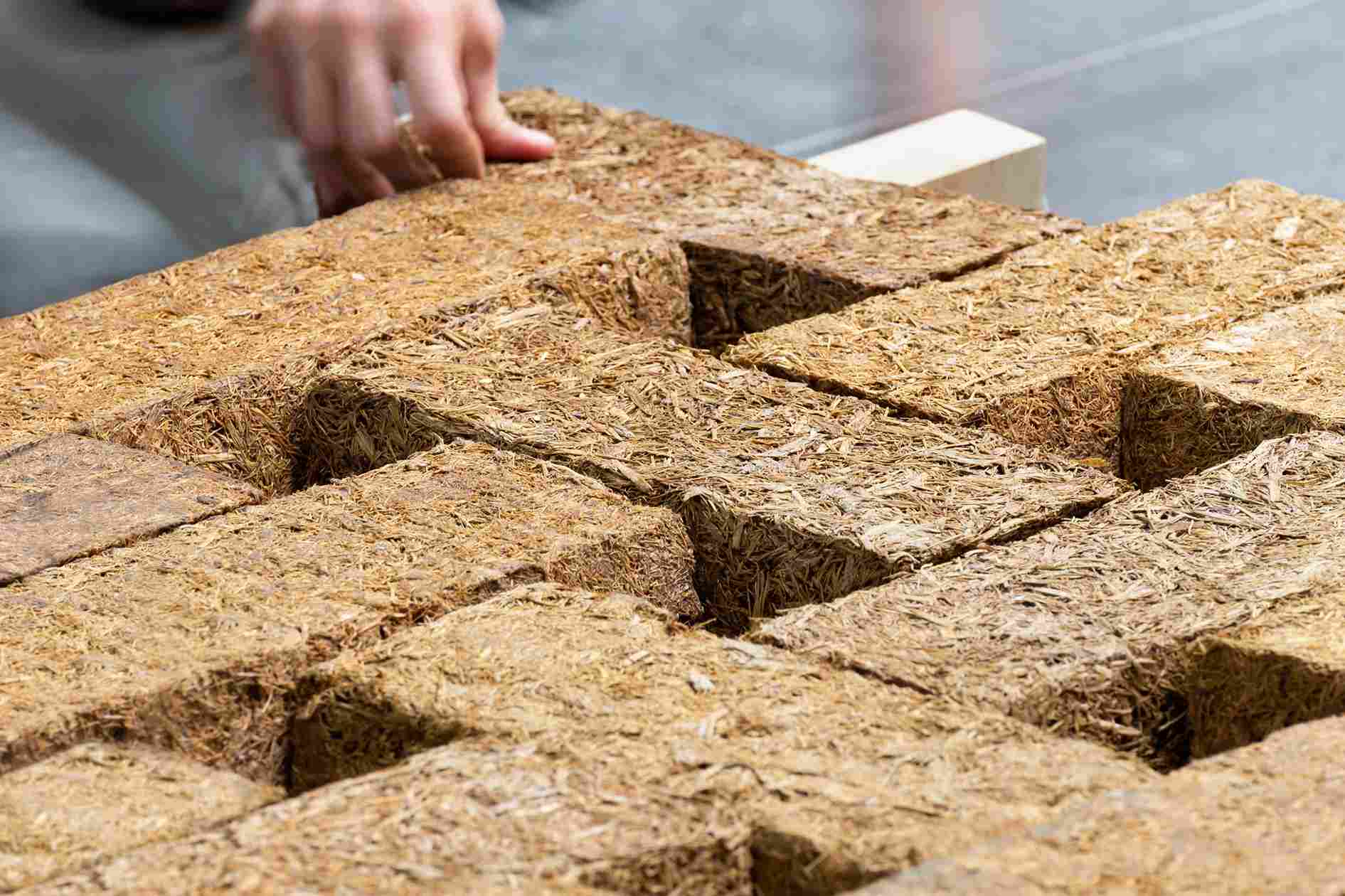
Not only is it cheaper than concrete, the material is four times lighter than traditional bricks and has 15 to 20 per cent lesser carbon emissions.
The UEL team including senior architecture lecturer Armor Gutierrez Rivas, Sustainability Research Institute co-director Alan Chandler and research fellow Bamdad Ayati led the concept, design and fabrication of the material, with support from Grimshaw architects Elena Shilova and Grimshaw design technology director Andy Watts and sugar brand Tate & Lyle Sugars.
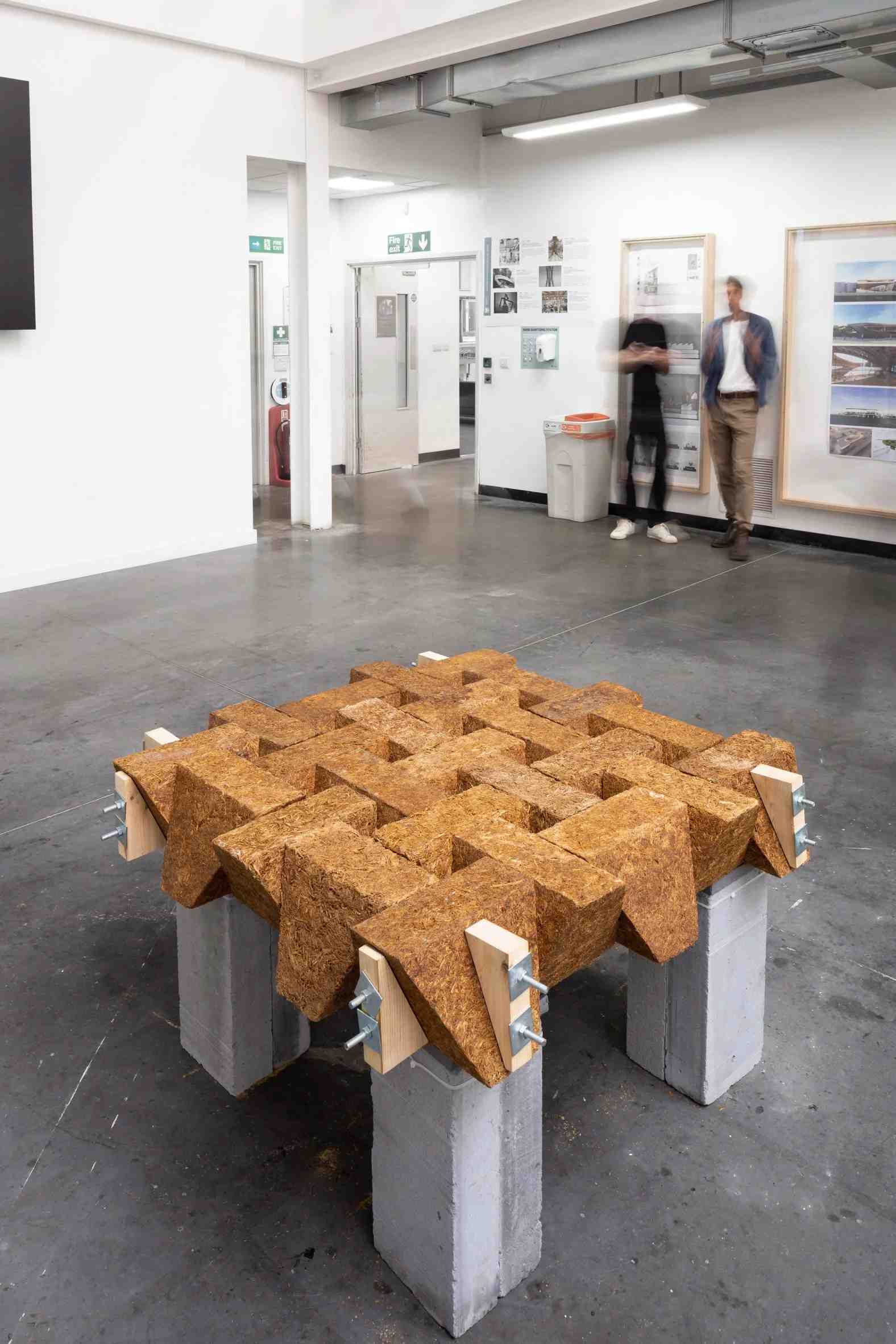
Sugarcrete has insulating properties, is fire-resistant and could be used for insulation panels, load-bearing walls, and structural floor and roof slabs.
As per the team, sugarcane is the world’s largest crop by production volume with nearly 2 billion tonnes produced yearly worldwide, of which, 600 million tonnes of fibrous bagasse is created as a by-product. This by-product is mixed with mineral binders to create Sugarcrete. Not only is it cheaper than concrete, the material is four times lighter than traditional bricks and has 15 to 20 per cent lesser carbon emissions. Sugarcrete has insulating properties, is fire-resistant and could be used for insulation panels, load-bearing walls, and structural floor and roof slabs.
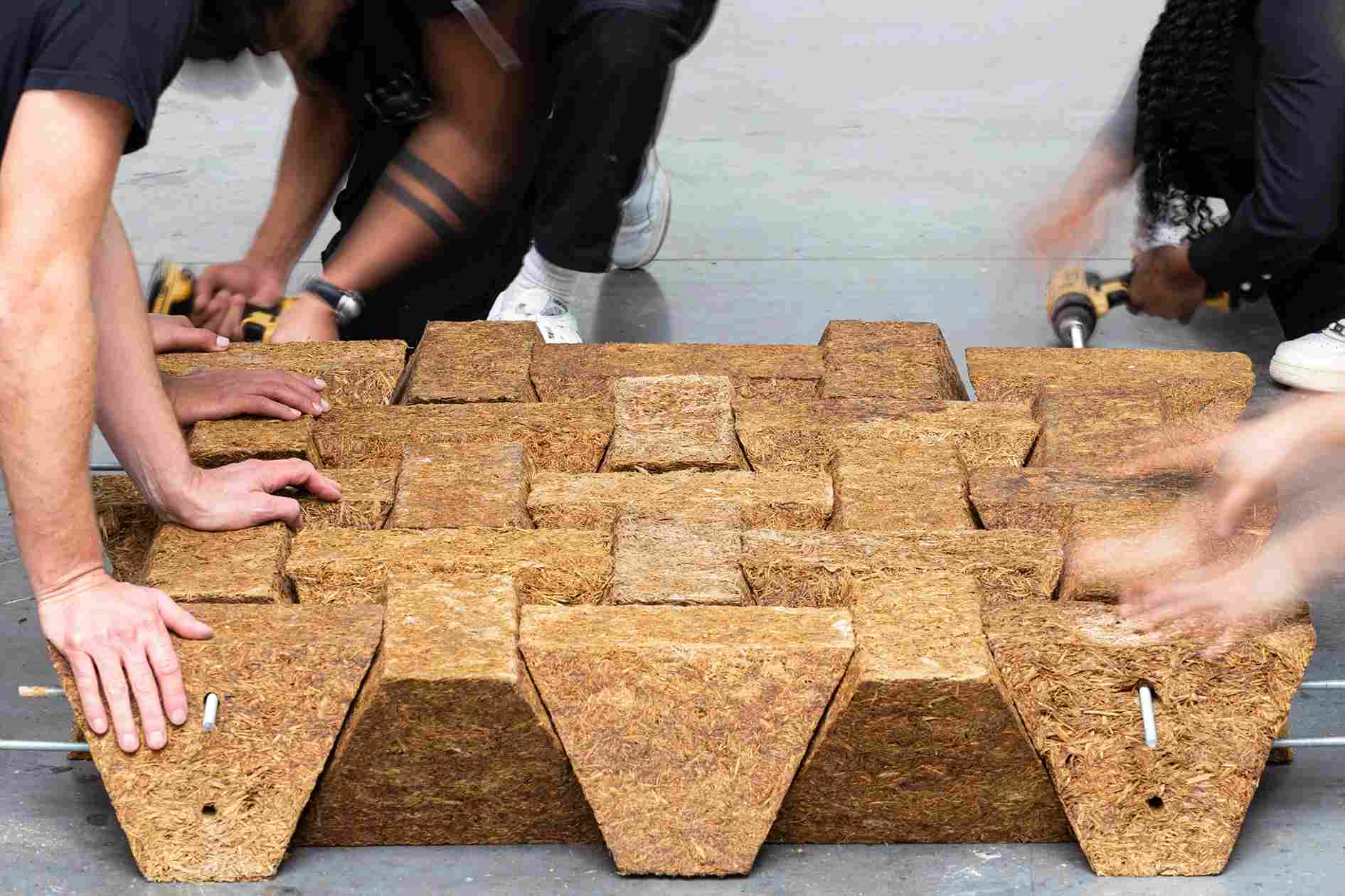
The project team suggested that Sugarcrete could replace the traditional brick industry.
The project team suggested that Sugarcrete could replace the traditional brick industry, potentially saving 1.08 billion tonnes of CO2, and offered self-supporting structural applications beyond infill. The material was designed to be easily constructed and disassembled using robotic fabrication and augmented reality technology, making it reusable for multiple projects. Grimshaw architects created a polyhedral shape with tapered sides that was used to form the material into interlocking blocks. These interlocking blocks were arranged in alternating orientations and united by post-tensioned perimeter ties to create the Sugarcrete Slab – a modular floor slab that can span up to 3m without the need for mortar.
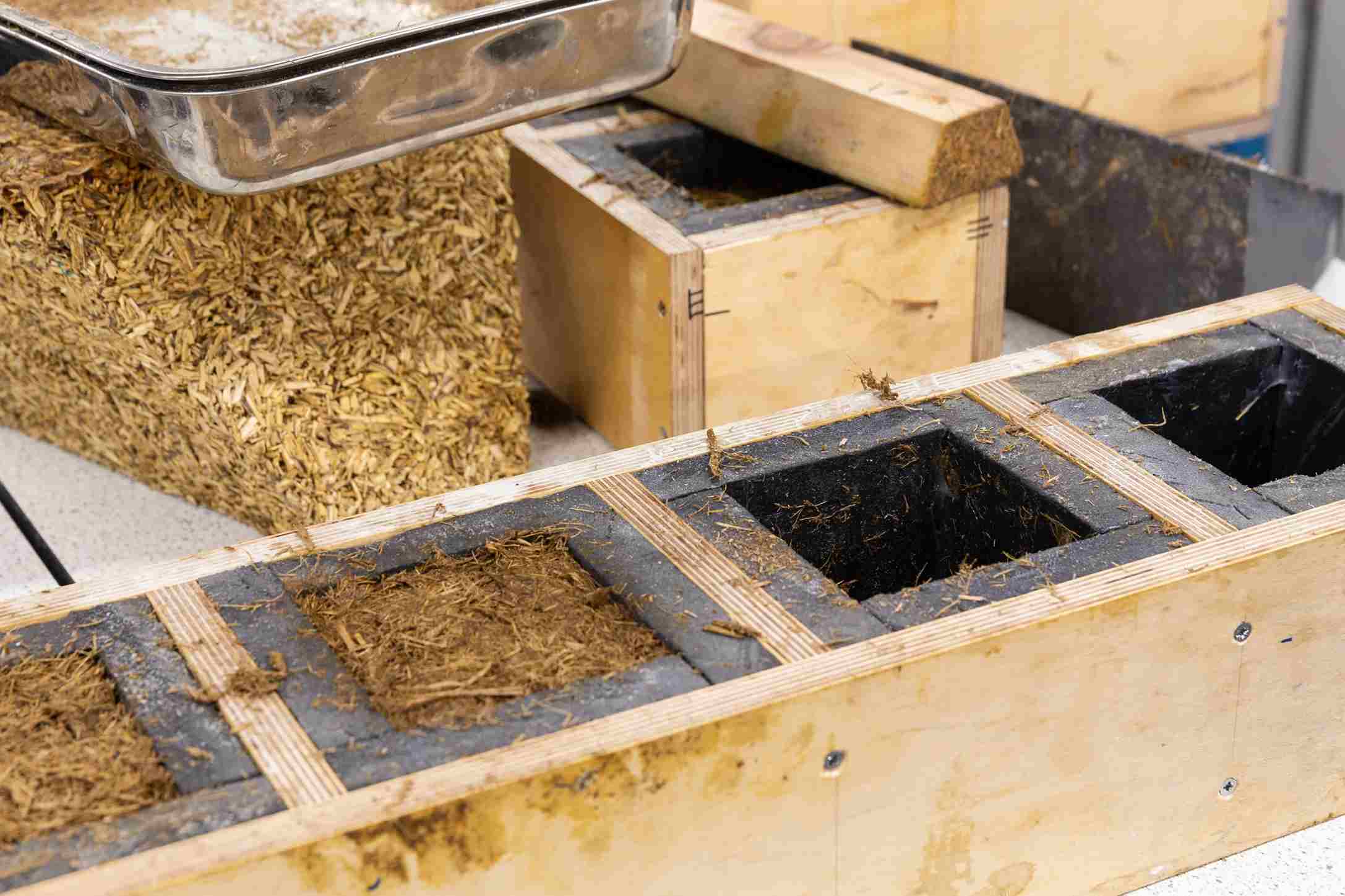
The material was designed to be easily constructed and disassembled using robotic fabrication and augmented reality technology, making it reusable for multiple projects.
Reportedly, the research behind Sugarcrete is publicly accessible with the hope that the material will be produced worldwide, particularly in communities where sugarcane is locally grown. Its future structural tests will focus on studying the shear and tensile capacity of the material, which can then be used to reduce the distribution of reinforcement within the system or increase the span capacity. The design team is currently exploring how to deploy the material in live projects, working within the local context of sugarcane harvesting communities in the global south.
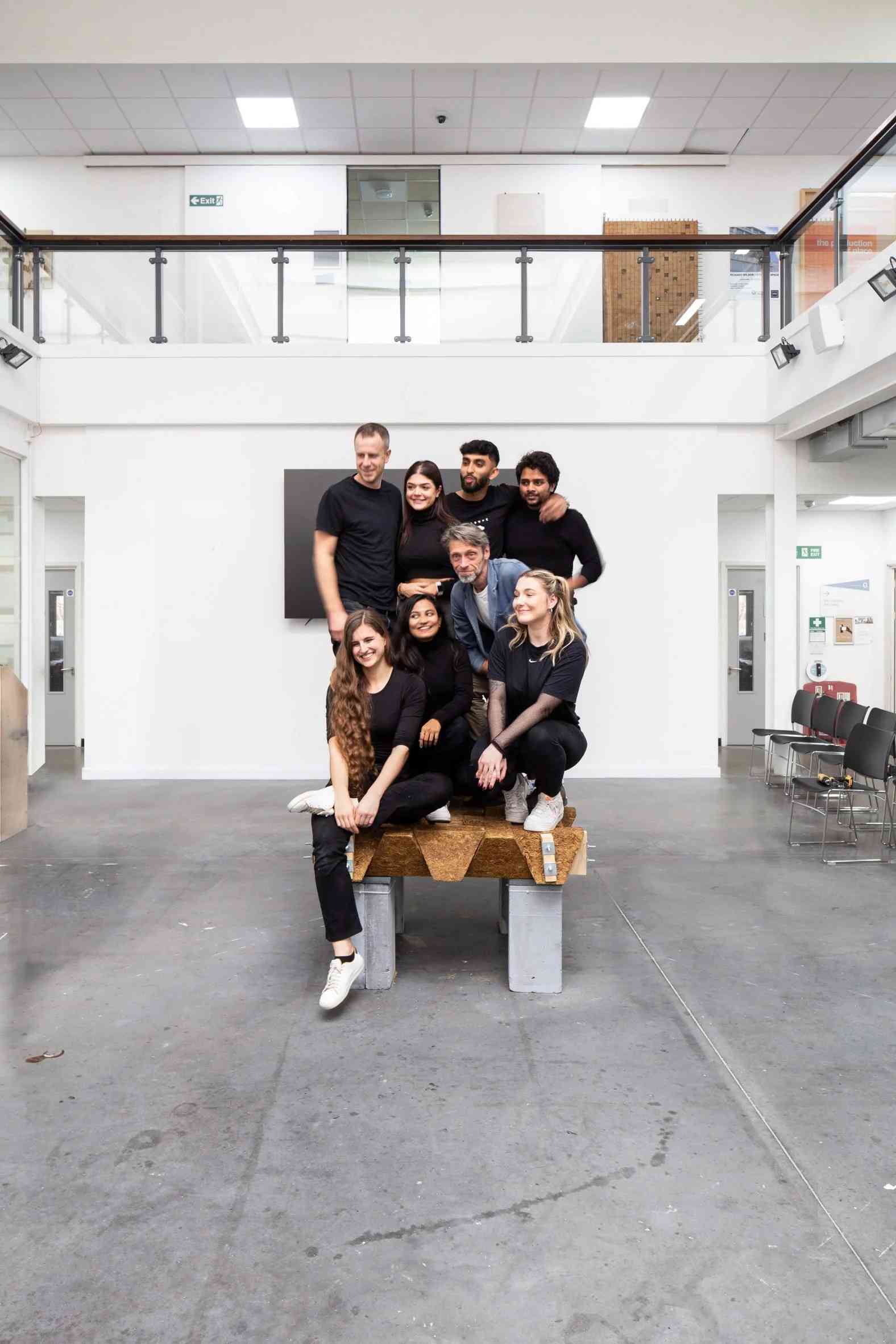
Grimshaw architects created a polyhedral shape with tapered sides that was used to form the material into interlocking blocks.
The next steps of the research will see the development and co-design of digital tools linked to by-product availability from diverse crops and regions and performance criteria that maps the potential to deploy Sugarcrete globally.
Image credit: Chromaphotography